Cotton isn’t just a piece of clothing we wear; it’s a fabric that has colors civilizations for centuries. From ancient Eygpt to classy modern fashion houses, cotton has been, and continues to be, one of the most widely used fabrics in the world. It is a staple in the wardrobe of every fashion enthusiast. In this guide, we will answer the query, “How is cotton fabric made?” and take you on a journey that starts from the fields and goes straight to factory floors.
Appreciating this natural wonder increases when we understand how cotton becomes a fabric used on a daily basis. So, let us walk through the processes step by step – detailed yet straightforward.
Table of contents
- Why Cotton is Essential to the Textile Industry
- About the History of Cotton Fabric
- Cotton Cultivation Begins
- Ring Spinning vs. Open-end Spinning
- Transforming Cotton into a Fabric
- Difference Between Weaving and Knitting
- Common Cotton Knit Items
- Final Finish
- Quality Checking
- Standards of Cotton on an International Level
- Sustainability in Growing Cotton.
- Farming Cotton Organically
- Waste Management and Water Use
- Cotton and The Environment Innovations
- Fashion Today: Cotton Still Reigns
- Brands of Fabric that Use Cotton
- Styles and Uses in our Day to Day Life
- The Cotton Fiber Fabric’s Common Misconceptions
- Cotton is Always Soft
- Every Wash Results in Size Changes
- Difficult To Take Care Of
- Breathability With Comfort
- Anti-Inflammatory Properties
- Challenges of Sourcing Cotton Fabric
- Pest And Pesticides Challenges
- The Price of Cotton and Other Fluctuations Factors
- Cotton Fabric Trends
- Smart Cotton: Innovation in Fabrics
- Smart textiles trends related with cotton:
- Conclusion
- FAQs
Why Cotton is Essential to the Textile Industry
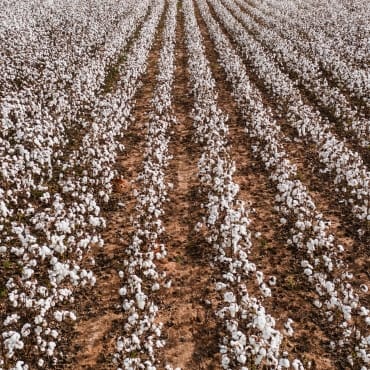
Cotton is the most vital part of the textile industry. With over 25% of the global fiber market, it is dominant. Why? Because its breathable, tough, soft, and multi-functional. It is relied on for clothing, bedding, towels, and much more.
Unlike synthetic fibers, it is easier for the environment as it is biodegradable. That makes it a first choice for many consumers and producers. Not only does it provide comfort, but it also adds elegance to any design.
About the History of Cotton Fabric
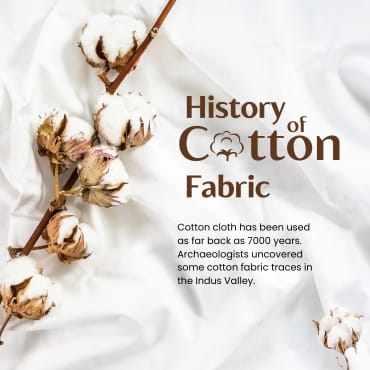
Cotton cloth has been used as far back as 7000 years. Archaeologists uncovered some cotton fabric traces in the Indus Valley. Egyptian cotton also gained popularity for its silk-like touch. Native Americans also spun and weaved cotton long before modern factories came into play.
There was a huge surge in cotton production during the Industrial Revolution. Hands were replaced with machines, homes replaced by mills. But the process is still the same, turning plants into fabric.
Cotton Cultivation Begins
Now lets take a look at how the cotton in your clothes starts its journey from the fields.
Ideal Climate for Growing Cotton
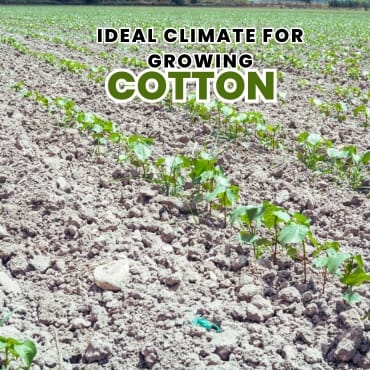
Cotton requires warm weather. It is grown best in areas where there are extended summers and plenty of sunshine. Think about places such as India, China, the USA (Texas in particular), and other parts of Africa.
Frost is something cotton does not like. Farmers need to be sure to plant it after winter and harvest it before the early cold sets in.
Regions Where Cotton Thrives
Some of the major producers of cotton around the world include the following countries:
- India: The largest producer of cotton with its mosaic of climates
- USA: Renowned for high-quality cotton from machine harvesting
- China: World’s largest supplier to fulfill high domestic and global demand
- Pakistan & Brazil: Emerging contenders in the cotton industry
In from each region, the different soil, water, and air provide unique fiber qualities.
From Seed to Plant: Growth Stages
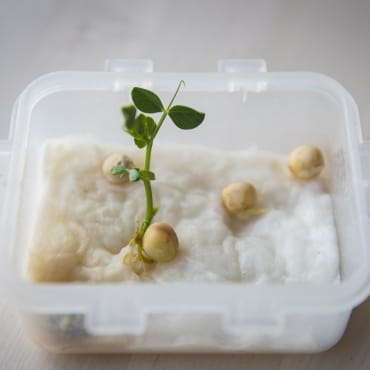
Life begins for a cotton plant as a tiny seed in the soil. After they’re planted, they havet o be spaced correctly, so they will grow into straight rows. Green shoots will start to show, which will grow to the size of the plant in approximately 2 months. The plant will be in full bloom. The flowers will shift from white, to yellow, pink, then red before falling.
From this we get a green pod, also known as a boll. This is the intriguiging part. Inside each of these pods, fluffy cotton fibers will offer us their embrace, and after 5 to 6 months the pod will split, exposing itself soft cotton fibers.
Gathering the Cotton
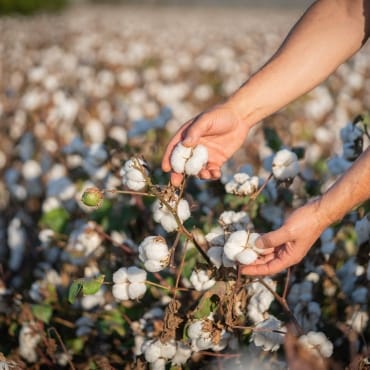
The moment of truth has come. The cotton is now mature, so harvesting is the next step. What is the best method decision to be made?
Farmer Cotton Picker vs Mechanical Cotton Picker
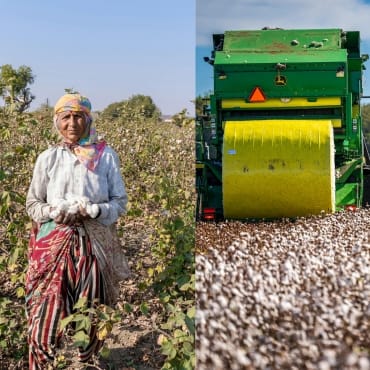
In some areas, cotton is still harvested manually. This preserves fiber in its natural form, thus avoiding damage at all costs. But the process is very tedious work.
Large scale farms use cotton harvesters/stipers. These machines harvest cotton at very high rate while completely bypassing any manual work. However, automatic cotton pickers can include stems and leaves as well.
Farm Technology In Cotton Harvesting
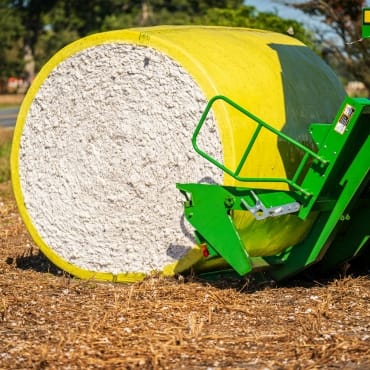
Farmers are now equipped with drones and AI which tells them at what time they should go out and harvest cotton. Precision farming also helps with waste factor.
Ginning The Cleansing Step
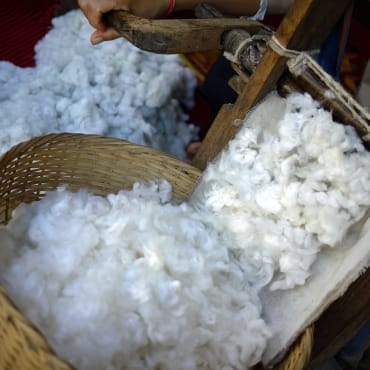
Post harvesting, the cotton undergoes ginning, which is by far the most effective way of cleansing cotton after any type of harvest.
Cotton Gin Walk Through

To begin with, the first step in the process includes cutting out the seeds from the fibers of the cotton during ginning. Interestingly, in 1793, Eli Whitney produced the first-ever cotton gin, as the name suggests. Since then, the cotton industry has completely transformed.
While removing blos of cotton from machine, a series of blades cut the fibers, pulling them through tiny holes, with the seed remaining locked inside. This process may sound vanilla, but it gets the job done exceptionally well.
Extracting Seeds from Cotton
Processors don’t discard the seeds they obtain. Instead, they use them to produce cottonseed oil, make cattle feed, or replant them. Meanwhile, they press the clean fibers—known as lint—into large bales and transport them to spinning mills.
Filling Lint
Now, the cotton is formed and looks like fabric. Spinning merges the fluff and converts it into a thread.
Carding: Aligning the Fibers
Carding machines brush the fibers so they all face the same direction, forming a thin, web-like sheet.
This is transformed into slivers, which are bundles of soft rope like fibers.
Combing and Drawing
Filling strong and long fibers, removes tangled or short fibers. The slivers are then pulled and multiple slivers are combined to make smooth strands.
Ring Spinning vs. Open-end Spinning
Best for shirts and bedsheets, ring spinning produces tighter and finer yarn.
Open-end spinning is utilized for lower-priced towels and denim. Due to price and related speed, both spinning methods have optimal value depending on the material used in the end.
Transforming Cotton into a Fabric
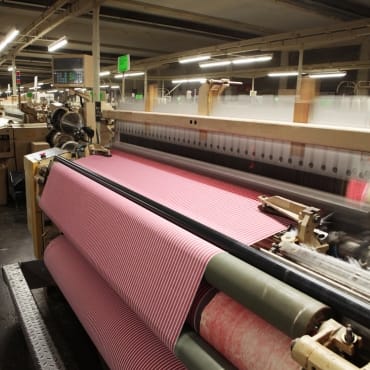
Weaving turns spun yarn into the fabric. All that’s needed is to use the fabric machine.
Introduction To Weaving
Weaving entails two sets of threads. The warp runs vertically, whereas the weft runs horizontally. A loom bonds them over and under in a way that creates a firm structure.
Varieties of Weaves in Cotton Textiles
Some common types are:
- Plain weave: Basic and strong (like bedsheets)
- Satin weave: Smooth and glossy (for luxurious cotton)
- Twill weave: Has diagonal lines (used in jeans)
Every weave provides a different finishing touch, texture, and style.
Difference Between Traditional And Modern Weaving Techniques
Artisans in rural areas still use traditional handlooms to produce beautiful and intricate fabrics, although the process is slower.
Nowadays, large automated mills handle most weaving. As a result, machines take over the tedious work and, in turn, quickly churn out consistent, quality fabric.
Cotton Knitting
Knitting does not solely apply to woolen sweaters. One can also knit with cotton.
Difference Between Weaving and Knitting
Typically, knits use a single strand of yarn. Then, the machine (or knitter) laces it together row by row. As a result, it forms flexible, stretchable fabrics.
This makes it ideal for t-shirts, baby clothes, and stretchy leggings.
Common Cotton Knit Items
Most of us have probably worn cotton knit items such as:
- Jersey t-shirts
- Sweatshirts
- Leggings
- Cotton socks
Due to it being lightweight and stretchy, these items also have a soft stretchy feel on the skin, making them easy to put onPreparation Before Dyeing Fabric
Dyeing gives fabric its beauty, but manufacturers must color the cotton before it’s ready for sale.
Dyes Can Be Natural Or Synthetic
Dyes can be classified into two categories.
- Natural dyes like indigo and turmeric have their roots in plants and minerals. They may fade easily, but they are environmentally friendly.
- Synthetic dyes More vibrant colors that last longer than the rest. They have one disadvantage though. If not processed with care, they may set off environmental hazards.
Efforts Made To Add Style And Color With Dyeing
First, manufacturers submerge cotton cloth into baths of dye. Next, heat opens up the fibers, allowing the dye to seep in where it needs to go. Then, to ensure the color stays in place, they use chemicals known as ‘locking in’ dyes to fixate the colors onto the cloth after rinsing it.
Dyeing Methods:
- Vat Dyeing: A method used by most denim manufacturers in their quest for rich, deep shades.
- Reactive Dyeing: Famous for its bright colors and awashability.
- Pigment Dyeing: Gives a faded and vintage look.
Each method gives a unique effect.
Final Finish
Treatment of Cotton is a journey where final touch gives shape and design.
Quick Additions Before Finishing
- Bleaching: Set to remove any tint that’s dull or yellow in color.
- Printing: Apply the desired patterns design with screens or digital printers.
Finishing treatments may include:
- Mercerizing: Enhancing the strength of the fabric while improving its luster.
- Sanforizing: The process of pre-shrinking the cloth to avoid post-wash shrinkage.
- Brushing: Softening the surface (ideal for flannel!).
Softening and Usual Shrinking
Softeners endow cotton with a soft appearance. Manufacturers can also apply special coatings to fabrics to prevent wrinkling or staining.
These few steps can greatly enhance the end product.
Quality Checking
No pieces of fabric are able to make it to store shelves without undergoing testing. Let’s see how us is implemented.
How Cotton Fabric is Evaluated for Quality
Quality control labs focus on the evaluation of:
- Thread count
- Strength and stretchable capacity
- Absorbency values
- Color permanence (does the dye run)?)
- Shrinkage after cleaning
They twist and pull, and soak the samples. If these steps are passed, they are ready for the market.
Standards of Cotton on an International Level
International standards like those by ICAC (International Cotton Advisory Committee) guarantee that there is no discrepancy. Labels such as Pima Cotton or Supima also follow stringent grading policies.
Sustainability in Growing Cotton.
There has been a lot of focus on the stereogum of the chemicals and water consumption used, andata for growing farmers. However, that narrative is changing.
Farming Cotton Organically
Importantly, growing organic cotton completely eliminates the use of harmful pesticides and synthetic fertilizers. Instead, it relies on natural methods such as biological pest control and crop rotation.
The result? Safer working conditions and healthier soil.
Waste Management and Water Use
Water is a necessity for the growing of cotton, but drip irrigation as well as rain-fed farming and recycling methods are helping reduce this.
Mills are also looking for ways to cut down chemical waste.
Cotton and The Environment Innovations
There are amazing new changes:
- Better Cotton Initiative (BCI): Aids farmers through teaching sustainable methods
- Recycled cotton: Created through garment waste
- Color-grown cotton: No dye needed because it naturally grows in shades like brown
These innovations collectively lower cotton’s impact on the earth.
Fashion Today: Cotton Still Reigns
Cotton is still number one in wardrobes despite new fabrics like polyester blends and bamboo.
Brands of Fabric that Use Cotton
Hundreds of brands encourage wearing 100 percent cotton.
- Levi’s (jeans)
- Calvin Klein (t-shirts and underwear)
- H&M and Zara (casualwear)
- Organic Basics (Eco friendly)
Winning comfort goes to cotton due to its soft feel alongside gentle breathability.
Styles and Uses in our Day to Day Life
You will find cotton in:
- T-shirts
- Jeans
- Towels
- Bedding
- Gauzes
- Baby clothes
No matter your fashion choice or age, cotton has you covered.
The Cotton Fiber Fabric’s Common Misconceptions
Lets bust these fibers misconceptions.
Cotton is Always Soft
Not quite. The softness depends on the weave and finish. Some untreated cotton can feel rough, especially when raw.
Every Wash Results in Size Changes
Cotton will likely shrink after the first wash if it hasn’t been pre-shrunk. However, it tends to retain its dimensions after that. Even more reliable is sanforized cotton.
Difficult To Take Care Of
Actually, it’s one of the easiest fabrics to wash. Simply use cold or warm water. Refrain from using the high heat dryer setting, and you’re good to go.
Woven Cotton Advantages
Beyond comfort, cotton has other benefits. It’s practical as well.
Breathability With Comfort
Cotton breathes. That’s why it’s preferable during hot days or after an intense workout session. Unlike polyester, it doesn’t trap heat.
Anti-Inflammatory Properties
Cotton is naturally soft on the skin. Because of this, doctors often recommend it for infants and people with sensitive skin. As a result, it rarely causes itching or irritation.
Challenges of Sourcing Cotton Fabric
Despite all its benefits, cotton has its challenges that need to be addressed.
Pest And Pesticides Challenges
Cotton is a pest magnet. Therefore, farmers frequently use chemicals. But overuse leads to soil damage and water pollution.
Organic cotton and biotech crops (like BT cotton) aim to fix this.
The Price of Cotton and Other Fluctuations Factors
The prices for cotton fluctuate as a result of the weather, politics, and demand. Floods, droughts, or trade wars can cause chaos in the market.
This is hard for famers and fashion brands alike.
Cotton Fabric Trends
Changes in technology and ethics, cotton does not stand still.,
Smart Cotton: Innovation in Fabrics
Textile scientists are developing technologies that are able to monitor heart rates or even change temperature in response to external conditions. As a result, smart cotton is emerging as a groundbreaking innovation in the textile industry. Moreover, smart textiles promise to transform not only athletic apparel but also medical garments. In fact, these advancements could revolutionize the way we think about fabric, offering new possibilities for comfort and performance.
Smart textiles trends related with cotton:
- Cotton Biodegradable Blends: Algae or hemp mixed with cotton.
- Circular fashion: Companies take back and recycle used cotton garments.
- 3D Knitting: Custom made cotton garments fitted and constructed with minimal waste.
The prospects are encouraging. Even more so, these textiles will usher in an era of eco-friendly fabrics.
Conclusion
So how does one make a cotton fabric? From a single seed to a closet and garment, it undergoes farming, ginning, spinning, weaving, dyeing, and finishing. Numerous people are involved, and significant distance is covered.
Cotton is fabric, but more than that, it is a tale of nature’s beauty, human creativity blended with industriousness. Being aware of this journey surely augments the makes and emphasizes the worth of cotton.
FAQs
Planting and growing cotton in warm, sunny regions is the starting point.
It removes seeds and impurities, making fibers clean and ready for spinning.
Yes, using plant-based dyes like indigo or turmeric, though synthetic dyes are more common.
Absolutely! It reduces chemical use and improves soil health.
Only if it’s not pre-shrunk. Most modern cotton fabrics are treated to avoid shrinkage.



This post helped me better understand the environmental and labor implications behind cotton production. It’s a good reminder to be more mindful of the materials we choose and the processes behind them.